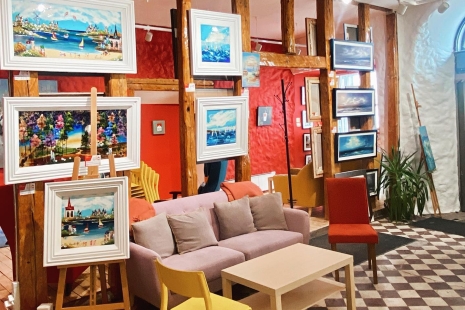The exhibition invites you to take a ride on a tram that goes outside the urban habitat. Running wild, the tram makes its way along the coast of the Baltic Sea, along the edge of Lake Baikal and through birch forests. At one point, traveling on this tram, you can see red-breasted birds flying over a lonely yellow tram. These birds, passenger pigeons, used to travel in large flocks over long distances, which is how they got their name. Unfortunately passenger pigeons were completely extinct by the turn of the last century.
A yellow tram reminds of those old trams which were cut off in favour of motorized means of transport. Later, by the end of the last century, many cities restored their tram networks or built them anew, thinking of trams as a sustainable urban transport.
However, some cities still wait for and discuss their trams coming back, just as scientists discuss the potential recreation of extinct birds. What could be more different – freely flying birds and rail-fixed trams? However, looking at these two out of the window of a wild tram, one can think about the fatality of human decisions and actions and the fragility of both nature and technology. Going through and beyond the city, this tramline stitches together the urban and the natural, the human and non-human.
Aleksandra studied Monumental and Decorative Arts at Irkutsk Technical University, where she also ran a non-profit gallery. She has studied Contemporary Art and Art Management in Moscow and in Berlin. At the moment, she is pursuing a joint doctoral degree at Tallinn University and Abo Akademi University in Turku. Her thesis is based on an artistic research on the atmosphere on/of tramways, and her doctoral study is embedded in the project “Public Transport as Public Space in European Cities (PUTSPACE)”. Aleksandra has exhibited her artwork at numerous exhibitions in Russia and Germany.
Exhibition opening: 10.02.2022 at 5.30-8pm
Exhibition period 10.02.-13.03.2022
www.staapliart.ee
Facebook
Gallery is open Mon-Sun 10am-6pm





